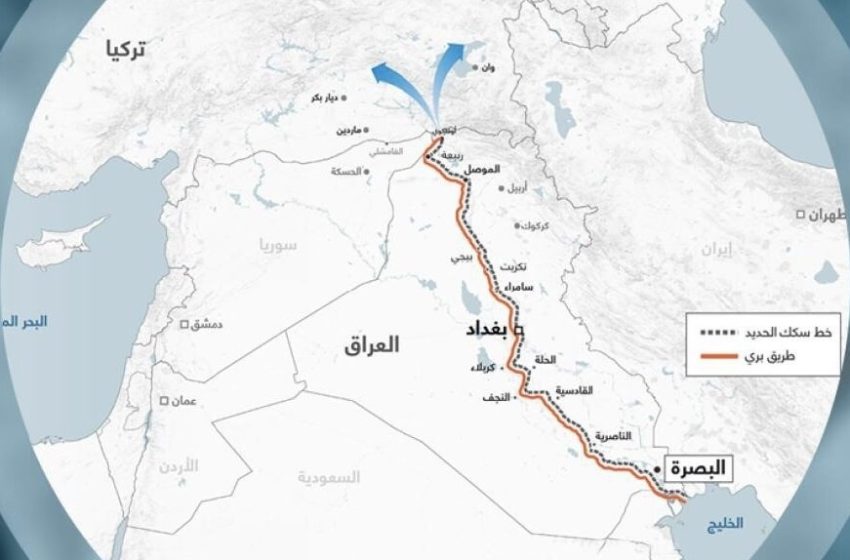Iraq’s Development Road railway will transport 13 million passengers annually

A map of Iraq showing the path of the Development’s Road’s railway. Photo: INA
Baghdad (IraqiNews.com) – The Iraqi Republic Railways Company plans to transport 13 million passengers annually through the Development Road’s railway.
The director of the national railway operator, Younis Al-Kaabi, told the Iraqi News Agency (INA) that the Ministry of Transport chose the path of the Development Road after reviewing three proposals from the designing company.
The 1,200-kilometer-long railway will extend from the Al-Faw Grand Port in southern Iraq to the Iraqi-Turkish border, passing through 10 Iraqi governorates.
According to Al-Kaabi, high-speed trains on the Development Road’s railway will operate four hours a day to transport passengers, 12 hours to transport cargo and containers, and six hours for daily maintenance.
The Iraqi official clarified that if the number of passengers rose, the four hours designated for passenger transportation could be extended.
The Iraqi Transport Ministry plans to extend railway networks to be linked with the Development Road railway to include all Iraqi governorates.
The Iraqi government is planning to set up major projects along the Development Road, including 11 industrial cities.
The Iraqi Ministry of Transport revealed in March that the government has authorized a proposal to purchase 50 new trains from foreign manufacturers to service the 1,200-kilometer railway that is currently under construction.
Many Arab, regional, and European countries have expressed their willingness to participate in Iraq’s Development Road project, either by pumping in investments or taking part in the construction works, as it constitutes an important link between Asia and Europe.
The value of the project is estimated at $17 billion. It is expected to turn the country into a transit center by shortening the travel time between Asia and Europe in an attempt to compete with Egypt’s Suez Canal.
